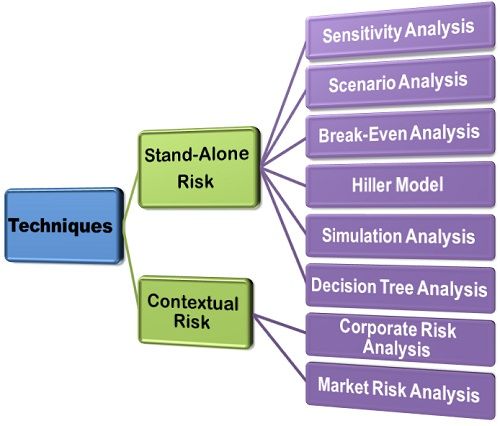Definition: The Risk is prevalent in all the business decisions, but it is much more inherent in the capital budgeting decisions. These decisions are the long-term decisions, which involves huge cost and whose benefits are derived over a long period of time or during the lifetime of the project.
The risk varies according to the nature of investments. A research and development project can be much riskier than the expansion project while; the expansion project can be much riskier than the replacement project. Hence, the firm must evaluate the risk before employing its resources in any long-term investment project.
Risk Analysis Techniques in Capital Budgeting
The firms apply several techniques to handle the risk associated with the capital budgeting decisions and are grouped into two broad categories:
- An approach to handling stand-alone risk of a project
- An approach to handling the risk associated with the firm and with the market (Contextual Risk)
These approaches can be further classified as:
Stand-alone Risk Analysis: Analyzing the risk of a project when it is viewed in isolation.
- Sensitivity Analysis
- Scenario Analysis
- Break-even Analysis
- Hiller Model
- Simulation Analysis
- Decision Tree Analysis
Contextual Risk Analysis: This covers the analysis of the project that contributes to the risk of a firm and the diversified investors.
- Corporate Risk Analysis
- Market Risk Analysis
Therefore, risk analysis is very much complex and cumbersome aspect of capital budgeting that requires a proper evaluation of risk and returns of the proposed investment project.


Valentine moraa says
Pleasure learning from you